An exploration into the potential of digital design-tools for non-design professionals across various industries.
In this Demo, you will see how the H2H prototype helps a real-world participant (a hospital nurse) overcome an ill-defined, but pervasive, issue during their every-day work.
The prototype guides the user through structured problem-solving through 6 stages of interactions:
Stage 1
To start, H2H establishes core information about the user by gathering primary user-data, which is, then, organised into a visual-model. The objective is to help participants visualise their own expertise and work-context as to enhance cognitive processes (Simonchik et al, 2015).
The output of this stage is a digital template that organises the user-knowledge into objectives, core deliverables, and value generated:
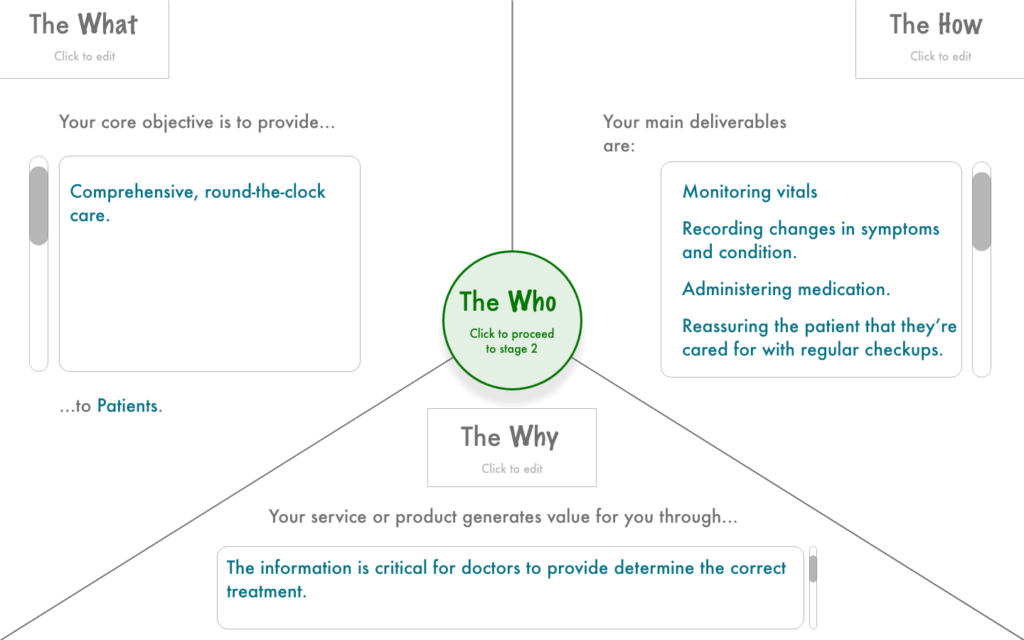
Stage 2
In stage 2, H2H directs the user to utilise any available data regarding the end-beneficiary (client, customers, stakeholders) into the creation of an archetype Persona. The process begins by establishing basic demographics then moves into qualitative-information analysis as to identify user-oriented issues. The objective of this stage is to integrate human-factors into the user’s desired solutions, which increases the chance to meet underlying stakeholder-needs and requirements (Broschinsky & Baker, 2008).
The output from this stage is a digital Persona:

Stage 3
Stage 3 begins the problem-identification process by, first, guiding the user to analyse if their core deliverables are hindered by the stakeholder-issues identified in the Persona; then, H2H assists the user in breaking down the issues by prompting them to isolate specific actions taken by, both, the stakeholder and themselves, which may be identifying factors. The objective of this stage is to place stakeholder-experiences & attitudes into the user’s work-context in-order to reflect how they influence outcomes (Carroll, M. J. 1999).
The output of this stage is a template showing the integration of stakeholder-data within the user’s workflow.
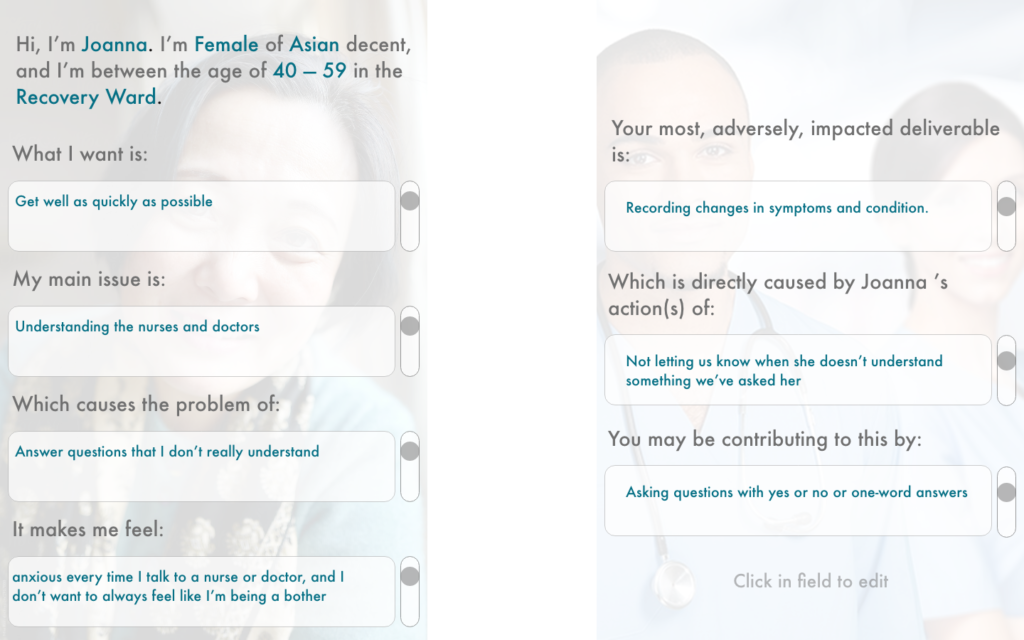
Stage 4
Stage 4 continues the structured problem-solve process by constructing all of the user-inputs into a contextual scenario. The user is guided through the scenario and prompted to reflect upon their own inputs in-order to identify problems resulting from difficulties identified during the previous stages. The objective of this stage is to create a clear problem-space.
The output for this stage is a visualised, problem-space model that can be shared for enhanced communication:
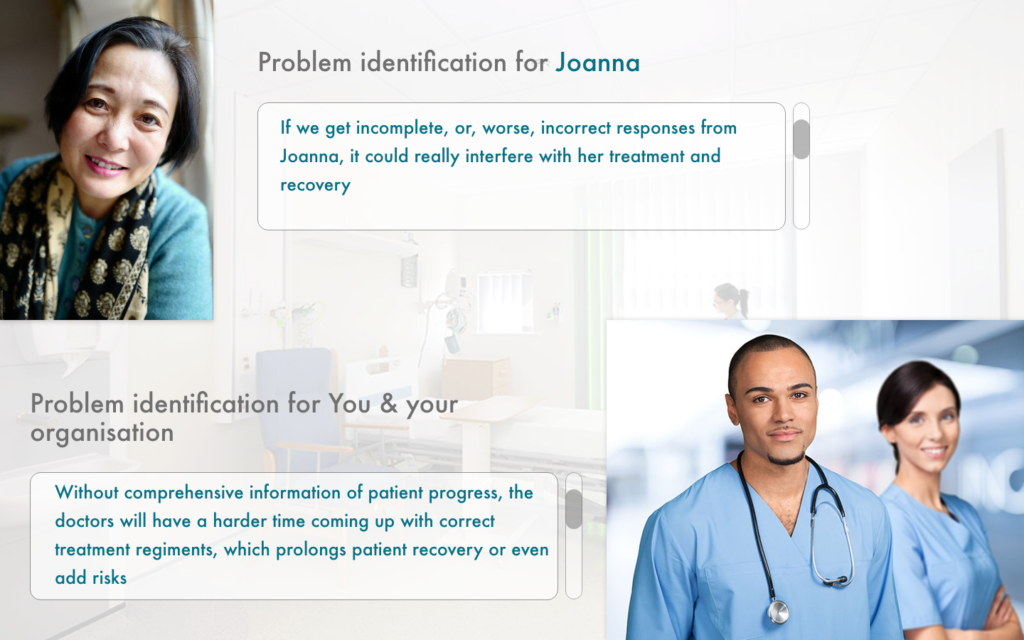
Stage 5
Stage 5 engages the participant in design-thinking by iterating through their constructed-scenario while reflecting upon their actions. The user is prompted to practice alternative-analysis, which allows them to approach the problem-space via different perspectives (Pinto, J, 2015, Pg 149). This stage incorporates the advantages in employing Scenarios to solve problems iteratively for alternatives solutions (Carroll, M. J., 1999).
The output of this stage is an action & object solution that targets the previously identified problem-space:
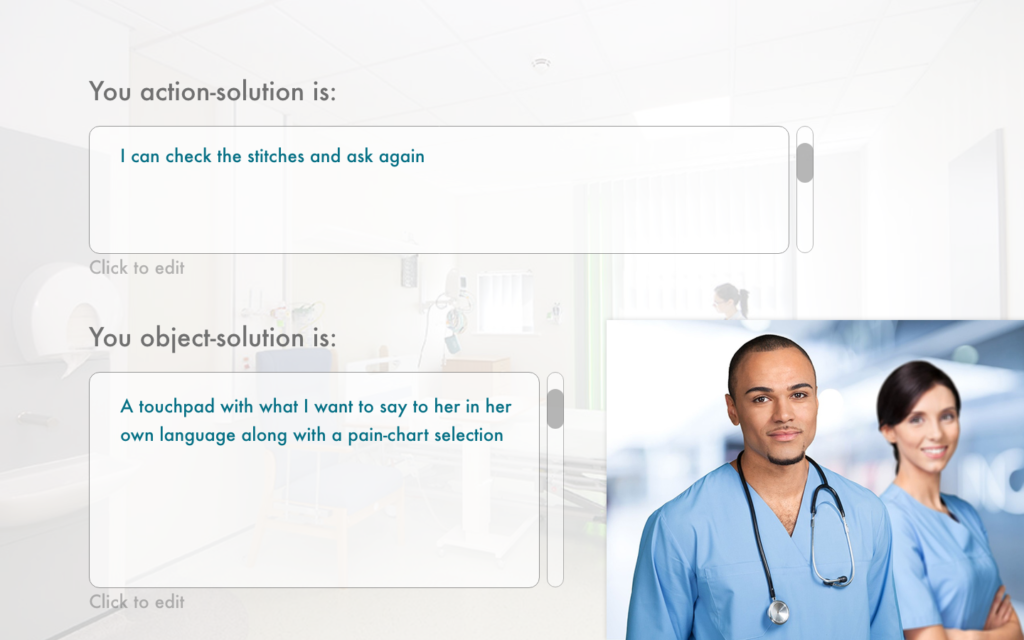
Stage 6
Stage 6, the final stage, of the prototype guides the user through another iteration of their constructed-scenario, but with the integration of alternative actions and support-item. The user is guided in the practice of user-empathy by considering the outcomes of their action & object solutions. This is where H2H provides the user with the means to visually demonstrate desired change & outcomes.
The output of this stage is the solution-space:
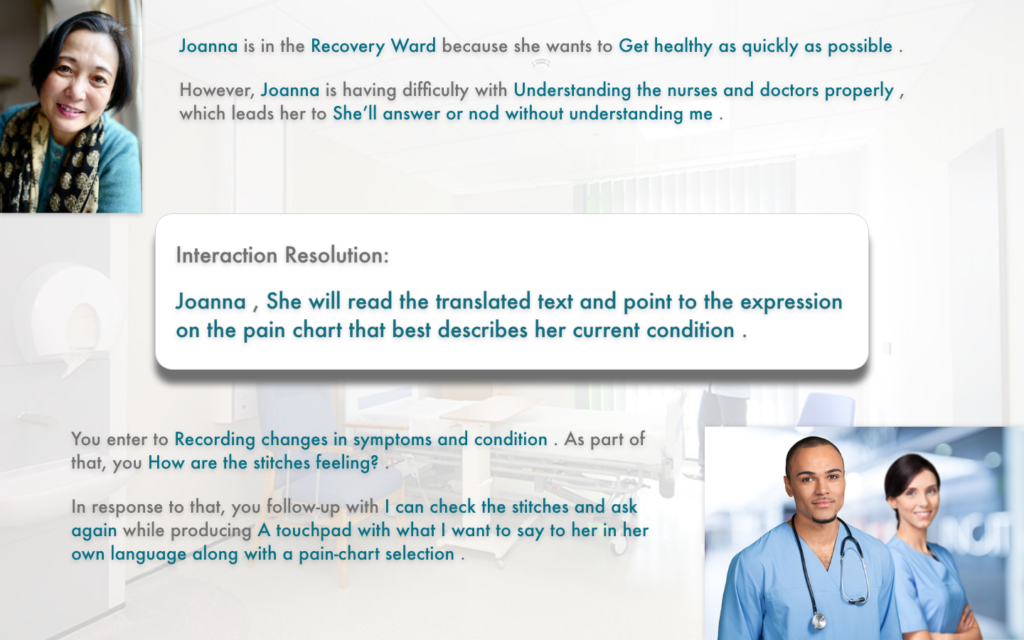
Interaction Outcome & Deliverables
Finally, at the simulation’s conclusion, the user is presented with their desired human-centric solutions in the form of discrete, visualised deliverables, which can be exported for sharing [Fig 7].
These artefacts can, then, be shared or replicated to encourage cross-discipline communication or to assist in task-synchronisation within a multidisciplinary team.
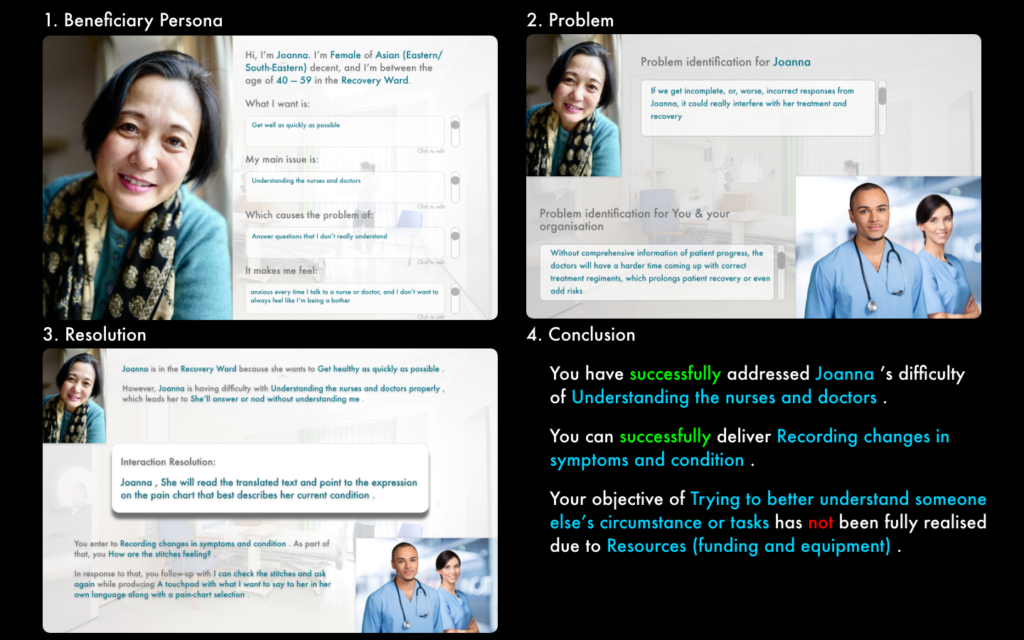
References
Broschinsky, D., & Baker, L. (2008, August). Using persona with XP at LANDesk Software, an Avocent company. In Agile 2008 Conference (pp. 543-548). IEEE.
Carroll, J. M. (1999). Five reasons for scenario-based design. Interacting with Computers (43-69), 13(1), (Pg, 2, 4-6)
Pinto, J. (2015). Project management : achieving competitive advantage (4rd ed., Global ed.). Harlow, Essex: Pearson Education.
Simonchik, A., Iriarte, I., Hoveskog, M., Halila, F., & Justel, D. (2015). Service design tools for business model innovation in B2B. In BAM 2015: The Value of Pluralism in Advancing Management Research, Education and Practice, Track 8: Innovation, University of Portsmouth, Portsmouth, United Kingdom, 8-10 September, 2015. British Academy of Management (BAM).
